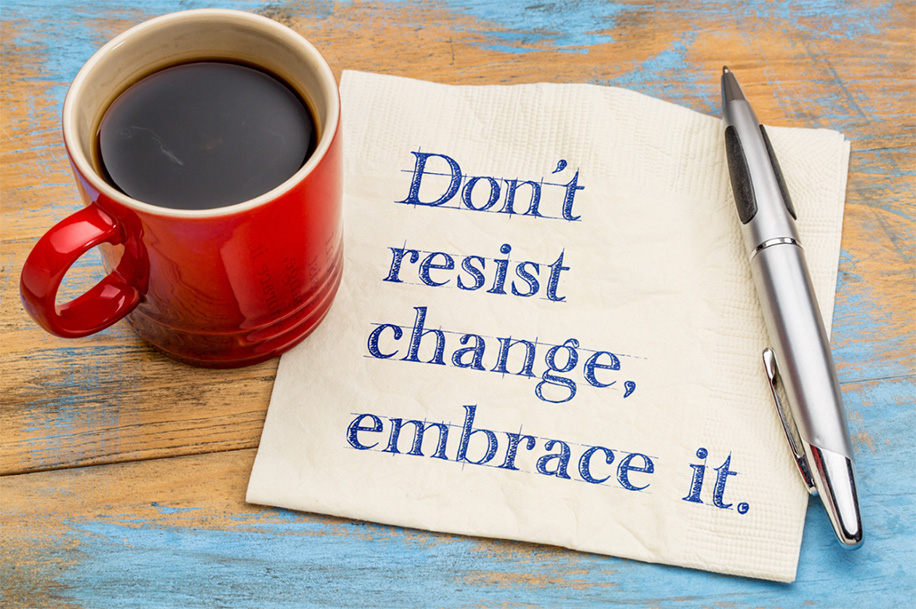Avoiding the Avoidance Placebo And Embracing The Pain of Resistance
"The natural tendency in the face of this trepidation is to stall or even back peddle, and our minds are brilliant at redirecting us to other priorities and deflecting our responsibility with logical-seeming excuses as to why we shouldn’t take the risk(s) of proceeding."
Share This Post
As humans, we’re primed to steer clear of discomfort and usually do everything we can to minimize it when we can’t avoid it altogether. Many times, we seem to have effective tools to do just that.
When we feel a headache coming on, for example, many of us will reach for that cool compress, dim the lights, and take some pain medicine. It seems reasonable, desirable, and beneficial to minimize our acute distress.
But if our headache is caused by being overworked and chronically stressed, rarely getting enough rest, or by an injury or underlying illness, that pain will return shortly, even if our soothing measures work temporarily. We need to understand the source of the pain and potentially make big lifestyle changes to truly manage it, often consulting experts such as a physician who can help us figure out the possible causes and appropriate long-term healing and preventative measures. It’s not a good idea to merely suppress or ignore intermittent, recurring headaches. We should instead acknowledge them as an opportunity for examination, conscientious self-care, and health improvement.
The very same principle applies when it comes to dealing with psychological distress–or cognitive dissonance–the emotional tension we experience when we’re grappling with conflicting, contradictory ideas and beliefs. In diversity, equity, and inclusion (DEI) work, we call it resistance, and it often hits leaders hardest when they’re about to take transformational steps forward.
Anxiety and fear typically intensify immediately before critical personal and professional development, such as finally acting on a commitment to equity and inclusion that you realize will require hard work but also realize it is urgent, necessary, and worthwhile. The natural tendency in the face of this trepidation is to stall or even back peddle, and our minds are brilliant at redirecting us to other priorities and deflecting our responsibility with logical-seeming excuses as to why we shouldn’t take the risk(s) of proceeding.
Realizing that resistance is a common roadblock–and at the same time the sign of a potentially positive turning point in personal and professional development.-Although not pleasant, this is one of the most important insights on your journey as an inclusive leader. In fact, the ability to work productively with internal resistance differentiates one acting as a leader of transformation versus one reacting as a victim of circumstances.
If You’re Willing To Work At It, Resistance Can Be Your Strongest Muscle

Although it can seem paradoxical at first, resistance–or the experience of inner tension and discomfort when our minds are grappling with conflicting, contradictory ideas and beliefs–provides essential leverage to grow and evolve as an inclusive leader. You just need to be able to harness that energy as forward-moving momentum instead of letting it stop you in your tracks or throw you backward.
Learning how to work with resistance is an essential skill you’ll repeatedly deploy on your inclusive leadership journey. It’s important to think of this aspect of personal and professional leadership development as an ongoing process—a mental muscle you will learn to strengthen and continuously flex in versatile ways as you cultivate lasting diversity, equity, and inclusion (DEI) initiatives and a positive workplace culture within your organization.
Look in the mirror to see yourself–and others
The introspective work of grappling with personal resistance is especially impactful in that it allows you to cultivate not only self-knowledge for “leading inward” but also insights you need to pivot that awareness outward as a strong mentor and compelling leader to others. As you figure out how to notice, name, and address your personal experiences of resistance, you’ll also be able to see it manifesting in others’ attitudes and behaviors more clearly. Providing support to staff in recognizing and managing that will become an invaluable part of your leadership toolkit.
Realize your potential by identifying what’s been holding you back
There are many different manifestations of resistance, all quite common among even the most well-intentioned leaders genuinely committed to DEI efforts. Acknowledging, naming, and describing these within ourselves in any given moment is a foundational and transformational process. Start today by reading more about the nine most common examples of resistance that I see among the leaders I coach–and let’s take the next steps together to explore and address those you recognize most within yourself and your organization.
So now that you are poised anew to forge ahead on the journey of transforming your organizational culture into an inclusive and equitable space, don’t let your misgivings convince you yet again that the flimsy bandaid or placebo of avoidance will be the remedy for your predictable resistance flare-up. Instead, let’s work together to discover what’s at the root of your DEI pain points and uncover personal blindspots, learn to name and address your internal resistance, and leverage that considerable energy to help carry you and your organization into an inclusive, productive, and thriving future!
Read more Posts

Inclusive Leadership Cultivates Positive Employee Engagement
“Strong leaders that cultivate employee engagement are sensitive to the full humanity of their employees”

JEDI Monthly Circle Co-creation Event
Share This Post Wednesday, April 24th from 12:00-2:00pm MT Join with us to co-create a series of rich, monthly conversations that reflect our highest aspirations